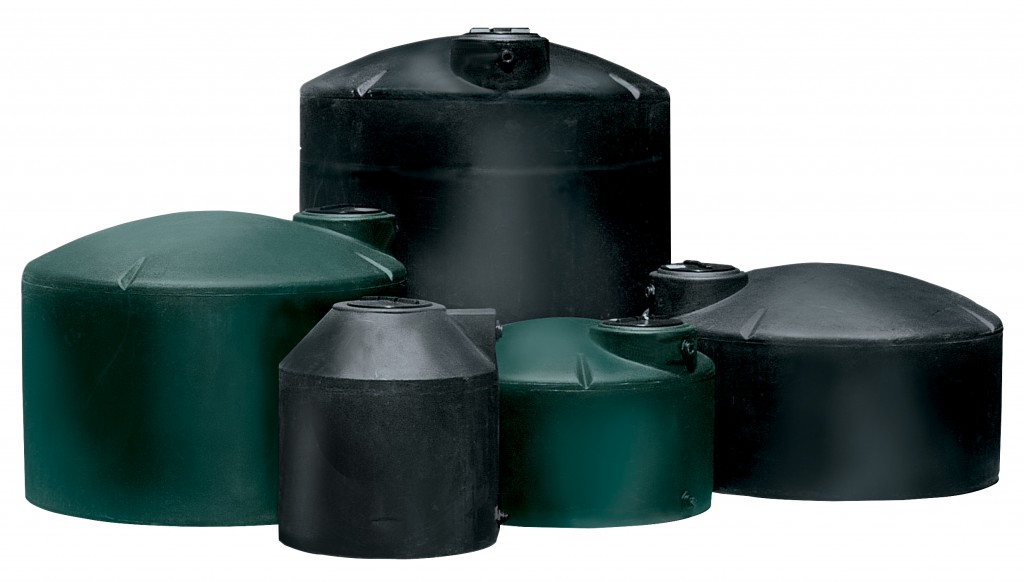Quick Overview of Rain Water Harvesting – Collection and Storage Tanks…
by Gene Vincent
Harvesting rainwater will require a collection system, consists of a rainwater accumulation area (roof), gutter and plumbing to route the water to a storage tank.
Depending on your goals you may add other equipment to pressurize the water, and further filter the water for variety of applications.
Plan to use the rainfall for plants, industrial water supply, firewater, or domestic home uses. While this is an overview of rainwater collection, keep in mind there are several elements to consider.

- Design to exclude and be able to remove particulate, leaves, dirt and other foreign matter, that may have an negative impact on your accumulated rain water. Tree leaves and foreign matter (grit, soot and roofing material) in your rainwater tank, may produce a biomass that acts as food to algae growth and bacteria.. Pre-filters on the inlet to your water tank allow you to periodically remove leaves and most of the particulate, that may come off the rainwater collection area/ roof.
- Chlorine, State regulations for chlorine residual introduced into your rainwater tank to kill algae and other bacteria that are harmful to people and animals. Consult your county extension agent for information on chlorination residuals, there are simple test kits that allow you to determine these numbers.
- Make your plumbing simple and close to the tanks, the further the tank is from the collection point, the more pressure or elevation is required to deliver the rain water to the storage tank.
- We prefer polyethylene as a storage tank material, polyethylene resins are NSF 61 approved for potable water storage tanks. Poly tanks are resistant, with 25-30 years of maintenance free use a norm.
- Post storage tank filtration, there are many filters that can address your application for harvested rainwater. Most rain water collection systems will require particle removal at some level. Equipment may find large particles – foreign matter problematic, drinking water filters will load quickly due to small particle sizes of unfiltered material, spray nozzles, etc. Available filters include, bag filters, screen filters, sand filters, media filters, DE filters, small micron and sub micron filters.
- Re-pressurization; Once you have accumulated, harvested rainwater, you will want to deliver this water to a variety of points, irrigation, farm animals, industrial demand points, home water filtration systems.
- Pressure produced by hydrostatic pressure…
Storage tanks will produce pressure based on its relative height. Pressure is produced at the rate of 1 PSI for each 2.34 feet of vertical head.

